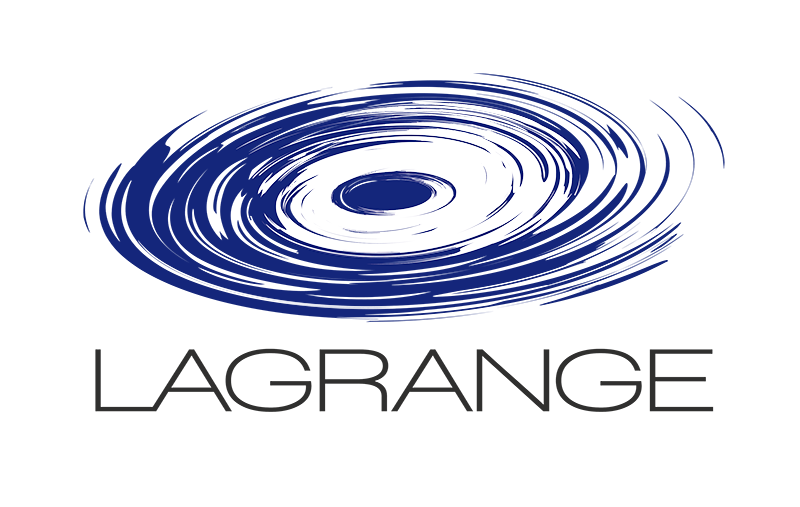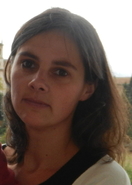Alejandra Recio-Blanco
Galactic Ecology, chemical abundances, Gaia
office : UMR LAGRANGE Bureau : C1-15
adress : C.I.O.N
Boulevard de l'Observatoire
CS 34229
06304 Nice Cedex 4
phone : +33 4 92 00 30 14
email : alejandra.recio-blanco@oca.eu
Research interests and main results
I am Astronome at the Observatoire de la Côte d’Azur (Lagrange Laboratory). My research interests are Galactic Archaeology, stellar physics and data analysis.
The history of the Milky Way can be reconstructed by analysing stars, just as the history of life was deduced by examining rocks. Stars record their past in their ages, chemical compositions and kinematics and can provide unprecedented constraints on the early phases of galaxy formation back to redshifts greater than two (a look-back time of about 10 billion years). The last centiry of research on the Milky Way galaxy has shown that Galactic evolution is encoded in a network of nonlinear interactions at multiple scales, a field we refer to as Galactic Ecology. My research tries to unveil how our Galaxy formed and what is its place in the cosmic evolution.
My main activities follow two main axes of research:
-
Diversity of Galactic stellar populations: I am a pioneer of the automated analysis of stellar spectra, implementing new machine learning methods (e.g Recio-Blanco et al. 2006; Recio-Blanco et al. 2016) and applying them to international spectroscopic surveys of Galactic archaeology with leading responsibilities. In addition, I am involved in the Gaia Data Processing and Analysis Consortium (DPAC) since its creation, leading the derivation of stellar parameters from the RVS instrument (GSPspec analysis). I have led impactful articles of the Gaia consortium as the first publication of the Gaia/RVS catalogue of stellar chemo-physical parameters (Recio-Blanco et al. 2023) and one of the few Gaia DR3 science performance articles, which presents the chemical cartography of the Milky Way (Gaia Collaboration, Recio-Blanco et al. 2023).
-
Galactic Ecology: I have leveraged the chemical abundances of stars to elucidate the interactions between the various components of the Milky Way (e.g. disc, bulge, halo) and between our Galaxy and its environment (accretion of satellite galaxies and/or gas). In the last years, I have first focused on the study of a major discontinuity in the evolution of the Milky Way that occurred ~9 Gyr ago. I have obtained foreground results on the characterisation of this discontinuity in the chemical composition of Milky Way stars. Taking advantage of the Gaia-ESO ground-based spectroscopic survey, for which I had leading responsibilities, I revealed that the Galactic disc presents a strong chemical bimodality outside the Solar Neighbourhood (Recio-Blanco et al. 2014; Hayden et al. 2017), reaching out the central bulge regions (Rojas-Arriagada et al. 2014; Recio-Blanco et al. 2017) and the halo (Recio-Blanco et al. 2018). I concluded that the bimodality could be related to a major galaxy merger, a result supported later by the discovery of the Gaia-Enceladus accretion using Gaia data. More recently, I further exploited the above-mentioned Galactic chemical cartography discovering the chemical imprint of the spiral arms (Poggio et al. 2022; Barbillon et al. 2025), and a recent chemical impoverishment of disc populations that could be linked to a gas infall from the Sagittarius merger (Spitoni et al. 2023). Finally, I have demonstrated that the high precision RVS GSPspec parameters allow to break the age-metallicity degeneracy of giant stars, uncovering the evolutionary history of the Galactic disc (Recio-Blanco et al. 2024) with high statistical depth.
This video illustrates the Gaia DR3 chemical cartography. The main results of this study can be found here: https://www.cosmos.esa.int/web/gaia/dr3-what-are-they-made-of
Responsibilities in international projects
I am heavily involved in the development of large observational projects like Gaia, the Gaia-ESO Survey (GES), the ESO-OCA AMBRE project, RAVE, WEAVE, and MOONS. I have also had leading responsibilities in nationally and EU funded scientific projects like ARCHEOGAL (ANR-14-CE33-0014) and EXPLORE (H2020-SPACE-2020, No 101004214).
In particular, my investment in the Gaia Data Processing and Analysis Consortium (DPAC) since its creation is a major commitment of my activities. I am responsible for the stellar parameters, the chemical abundances and the DIB parameters derivation from the Gaia/RVS spectra, managing an iternational group of 12 researchers and engineers: the Generalized Stellar Parameteriser - Spectroscopy (GSPspec) working group. You can see here the recent Gaia Image of the Week that ESA has published to illustrate the GSPspec contribution to Gaia DR3. The team is now in operations for Gaia DR4 in December 2026.
The AMBRE Project (de Laverny, Recio-Blanco et al.2013) is a collaboration between the Observatoire de la Côte d’Azur (OCA) and the European Southern Observatory (ESO) to automatically and homogeneously parametrise archived stellar spectra from ESO spectrographs: FEROS, HARPS, and UVES. The AMBRE catalogue is available through the ESO webpages. In addition to the catalogue production, the OCA/AMBRE team has already lead the publication of about 20 refereed scientific articles on Galactic Archaeology using the AMBRE data.
In addition, I was P.I of the ARCHEOGAL scientific project funded by the French Agence Nationale de la Recherche (ANR). ARCHEOGAL exploited the Gaia-ESO Survey data (of which I lead the largest spectral analysis Working Group), the Gaia DR1 and DR2 (of which I was co-author as an active DPAC member) and the analysis of the European Southern Observatory spectral archive by the ESO-OCA AMBRE project (of which I am co-PI).
I was responsible for the Galactic Archaeology topic of the EU H2020 EXPLORE project, leading the OCA contribution to the consortium. EXPLORE has gathered experts from different science domains and technological expertises to develop new tools that will enable and promote the explotiation of space science data. EXPLORE deploys machine learning and advanced visualization tools to achieve efficient, user-friendly, realistic exploitation of scientific data from astrophysics and planetary space missions, as well as from supporting ground-based massive surveys. The Galactic Applications working group, of which I am responsible, aims at the scientific exploitation of Gaia and ground-based data through the study of Milky Way's formation and evolution.
Finally, I suppervised 16 PhD students and post-docs, including one Marie Skłodowska-Curie postdoctoral fellowship. Six of them have now a permanent position in accademia.
I have being awarded the Advanced Research Programme of Université Côte d'Azur in 2020 and, as a member of the Gaia DPAC consortium, the Berkeley Prize of the American Astronomical Society.





